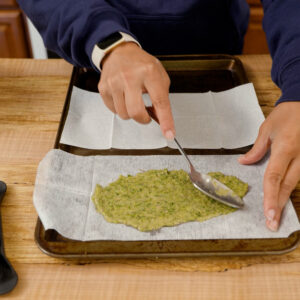
Comfrey Poultice
Learn how to make this easy DIY comfrey poultice to use on sprains and sore muscles. Just a few simple ingredients is all you need.
Equipment
- Gauze Separate out the gauze pieces. You'll notice one piece has a wider weave which allows more of the poultice to seep through the gauze. Then the other piece is a tighter weave which is great for putting on top of the poultice. Cheese Cloth/Muslin: If you don't have access to gauze, you can also use cheesecloth or muslin, but you may need to double up on the layers.
100% Cotton Fabric: If you have a 100% cotton sock, tea towel, or even old sheets, you can place some comfrey poultice either into the sock or on a scrap of fabric, then place the sock or fabric over the injured area.
- Blender A high-powered blende
Ingredients
- 45 grams Comfrey Leaves (1.55 ounces/45 grams fresh leaves OR .51 ounces/15 grams dried comfrey)
- 1 cup Water
- ¼ cup Binder If you have bentonite clay, that works well as a binder. You can also use arrowroot powder, cornstarch or regular old flour (which is what I'm using in the video).
Instructions
How to Make a Comfrey Poultice
- Take the comfrey flowers, leaves and stems and place them into a high-powered blender.
- Add water and add the lid.
- Blend until you're left with a rough puree.
- Add binder (I used flour) and blend again. Check consistency and add more binder, as needed, until you reach a paste consistency (similar to a muffin or cake batter consistency).
Making a Comfrey Poultice Pack
- Separate a large piece of gauze into two pieces.
- On the gauze with the wider weave, spoon on the comfrey poultice. How much you use and how wide you spread it out will be determined based on the injury.
- Cover the poultice with the tight-weaved gauze. This is simply to keep the poultice from running off the gauze.
- You can freeze the gauze to create a healing ice pack (see "pro tip" below for directions) or use it immediately.
Notes
How to Use Comfrey Poultice
- Place the gauze with the poultice over the injured area and let it sit for at least 10 minutes, up to several hours (or overnight).
- Use a towel to keep the liquid from dripping onto the surface below.
- Apply three times a day, reducing the applications as the injury heals.
Tried this recipe?Let us know how it was!